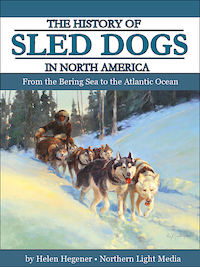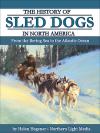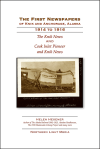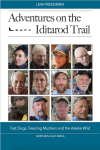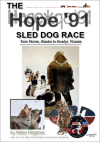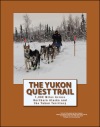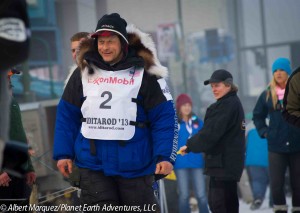
Martin Buser at the Ceremonial Start on 4th Avenue, Iditarod 2013. Photo: Albert Marquez/Planet Earth Adventures, LLC
The 2013 Iditarod got off to a blazing start with four-time champion Martin Buser setting a blistering pace out of Willow. Leaving in the first place position with bib #2 (#1 is honorary and does not race), Buser ran his 16-dog team straight through the night, passing checkpoint after checkpoint and surprising volunteers with his early arrivials in a bid to stay out in front of the pack.
In a second surprise move his former handler,Matthew Failor, driving another team of Buser’s dogs, sped into second place after starting near the end of the pack with bib #61. A 2012 finisher, Failor recently finished the grueling 1,000-mile Yukon Quest, and as he worked at a checkpoint alongside Martin and Lance Mackey, Failor quipped to a reporter, “Between the three people here, we have eight Iditarod championships!”
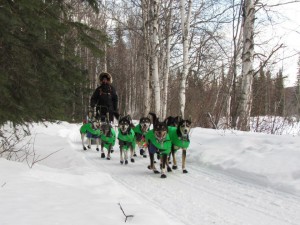
Matthew Failor, on his way to Fairbanks, 2013 Yukon Quest. Photo by Eric Vercammen/Northern Light Media
It was classic Failor humor, as Martin has four wins, and Lance has four. Matthew? None yet.
This is Martin Buser’s 30th Iditarod, and he knows the trail better than most mushers. 100 miles into the race he was still clocking an average of 9.3 mph, and as he finally rested at the Rohn checkpoint, veteran Iditarod musher Perry Solomonson commented to Facebook fans, “Are you following the Iditarod? Martin Buser just ran 188 miles with less than 2 hours rest, arriving into Rohn, 19 hours after leaving the Willow restart yesterday at 2:00PM. Being the first out, he’s taking full advantage of great trail conditions without any tracks in front of him. By doing this incredible LONG run, he’ll try to stay one checkpoint ahead of ALL competitors. The race has never been won with this early move! We’ll see how this plays out.”
Happy Trails Kennel near Big Lake, Alaska, is home to Martin and his wife Kathy Chapoton, a teacher, and their sons Nikolai and Rohn (both named after Iditarod checkpoints). Born in Winterthur, Switzerland, in 1958, Martin began racing sled dogs in 1975 at the age of 17. Four years later he moved to Alaska, and began working and training with long-time Alaskan mushers Earl and Natalie Norris.
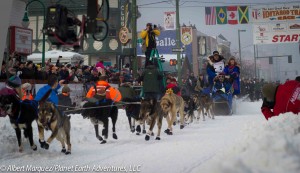
Leaving the Ceremonial Start on 4th Avenue, 2013 Iditarod. Photo by Albert Marquez/Planet Earth Adventures, LLC
Martin ran his first Iditarod in 1980, placing 22nd. He placed third in 1988, second in 1991, and in 1992 he won his first Iditarod championship. He won again two years later in 1994, placed second in 1995, third in 1996, and won again in 1997. He came close again with a second place finish in 1999, but it was 2001 before he took his fourth title. Over the past few years Martin has stayed in the top twenty, but only barely, with a 19th place finish in last year’s race. There were those who thought the champ’s reign was over, but they didn’t reckon with his steady, calculating presence. He was most likely just waiting for the stars to align, and it looks like this year they might all fall right into place.
The first star is Martin himself: Not only is he a four-time champion, he’s run the race 29 times, and has never scratched. He’s placed in the Top Ten 14 times, not even counting his four championships. He’s won almost every award the Iditarod gives, including multiple receipts of the Leonhard Seppala Humanitarian Award, which recognizes one musher for providing exemplary dog care and is considered the highest honor a competitor can receive.
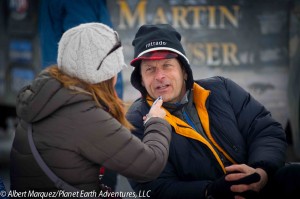
Emily Schwing, KUAC Fairbanks, interviews Martin at the restart. Photo: Albert Marquez/Planet Earth Adventures, LLC
The second star is his dogs: They have proven over the years to be incredible athletes; Martin is the runner-up for fastest finish time in Iditarod history. And Martin’s son Rohn, who had been entered and training for this year’s race, withdrew a few days before the start, combining his dogs with his dad’s to give Martin the strongest team possible. And impressively, Matthew Failor joining Martin at the Rohn checkpoint with the kennel’s B team neatly underscores the toughness and speed of the famed Buser Dogs.
The third star is the trail: Buser’s dogs are known to love a fast trail, and Alaska Dispatchreporter Craig Medred called it “…a fast track to Nome. The early trail running some 150 miles from the Winterlake Lodge at Finger Lake up and over the Alaska Range to the village of Nikolai appears to be in the best shape of modern Iditarod history.”
The fourth star may well be the weather: If a storm moves in and cuts off the lead teams from the rest of the pack, the mushers out front can breathe easier and perhaps even let up on the pedal a little. Races have been won and lost dependent on the vagaries of the weather.
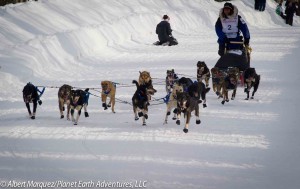
Martin’s BuserDogs display an unusual configuration leaving the Willow ReStart, 2013 Iditarod. Photo by Albert Marquez/Planet Earth Adventures, LLC
The most important part of the equation is, of course, the dogs. Trapper Creek musher Joe May, who won the 1980 Iditarod, and won the Sportsmanship Award in the inaugural Yukon Quest several years later, also shared his perspective in a Facebook comment: “Many mushers have a dog or two or several in the team capable of this kind of run without getting into the dogs reserves. No one to my knowledge has ever put an entire team of them together. If Martin has done that it will be a first. If the run was done on the strengths of his ‘core’ at the expense of the ‘soldiers’ there will be a price to pay. The old adage of ‘don’t ever let them get tired’ is as valid today as it was in 1973. I wish him well but am dubious.”
Five-time Iditarod finisher Zack Steer is also dubious. In an article for Alaska Dispatch, Is speedy Buser afflicted with Iditarod Amnesia? Or just cagey?, Steer recounted Buser’s past mistakes and opined, “He’s is going ‘all in’ early on in the race and making a statement to the other racers that he is the team to beat. I contend the other teams should call his bluff and let him go. History has shown this to be a bad way to play your cards.”
2012 Iditarod champion John Baker has other thoughts, however. In an interview for the Anchorage Daily News he told reporter Kyle Hopkins: “My buddy Martin is doing something different, which is neat to see. …If anybody’s going to do that, he has the team for it. He wants to win. I love that about him.”

